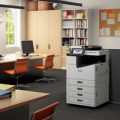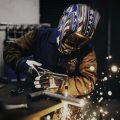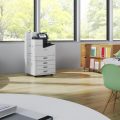Rapid tooling is a process that is used to create a mold in a short period of time. It is one of the most important processes involved in prototyping before the commencement of production on a mass scale. Hire services from the best prototyping companies.

The molds are often created from three-dimensional computer-aided designs or two-dimensional slices, following which a mold is created as a three-dimensional geometric object.
Here are a few types of rapid tooling used in prototyping:
• 3D printing in plastic
3D printing joins material together to create three-dimensional objects of any shape or form with the aid of a computer-aided design model (CAD), and I is one of the most frequently used methods of prototyping. It enables one to create any form or mold within a short span of time, which is sometimes no more than a few hours. 3D printing in plastic is often the most preferred form of prototyping as it is more cost effective than printing in metal.
• Selective metal melting
Selective metal melting or direct metal laser sintering is a process by which high-powered 200-watt Yb-fiber optic laser is used to create a form by evenly distributing atomized metal powder onto a substrate plate. This form of rapid tooling is used to create internal designs that could not otherwise be manufactured in a cast. The process uses a wide range of alloys, as a result of which it often creates a prototype out of the material of the production component.
• Laminated object manufacturing
Laminated object manufacturing is a process of rapid tooling which uses layers of plastic, metal or adhesive coated paper which are successively attached together and then cut into the desirable dimension with a laser cutter. Objects printed with this technique can also be later modified by machining or drilling. This method is often employed to make relatively larger parts.
• Optical fabrication
Optical fabrication of stereolithography uses a method known as photopolymerization in order to link the chains of molecules to make up polymers in order to form 3 dimensional objects. This is one of the more expensive methods of rapid tooling, but it is also one of the most time-efficient modes. The molds produced through optical fabrication can also be used to make master patterns for injection molding.
• Solid ground curing
Solid ground curing uses a high powered UV lamp through specially created masks in order to create a mold by hardening liquid photopolymers into solid three dimensional objects. The process is extremely time-conserving as the processing time for the generation of a layer of matter is independent of the complexity of the layer. It is one of the most accurate processes of rapid tooling, but is also extremely expensive because of its complexity.
In spite of its advantages, rapid tooling has a number of disadvantages, as even though it is often less time-consuming than traditional methods, it may take a significant amount of time to get the finishing touches in the right order once the mold has been created. For the best results, hire services from the best prototyping companies.
Author Bio:
Mike Haynes is the executive Vice President of Machine shop. Prior to Machine shop, Mike Haynes is a writer has a deep knowledge about industrial growth, helped many business owners through his blogs.






